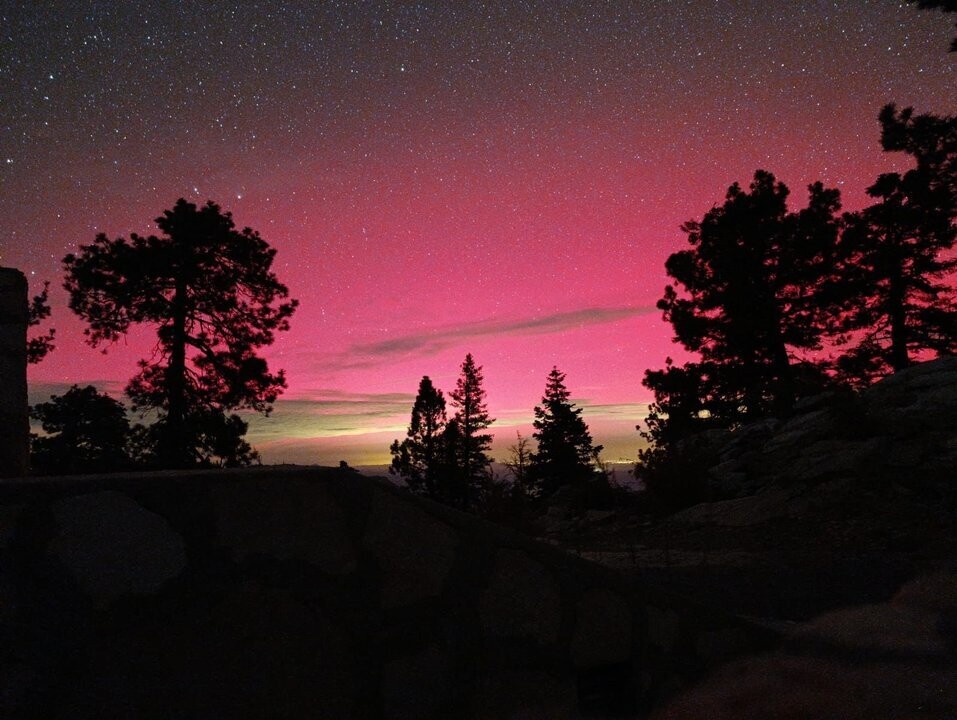
A light show of auroras visible from northern Mexico, such as Baja California, Sonora, and Chihuahua, has been left in its path by the most intense geomagnetic storms of the current solar cycle, categorized as G4.
The phenomenon is caused by a coronal mass ejection that traveled at more than 700 kilometers per second from the Sun, and was monitored by the Mexican Space Weather Service (SCiESMEX) of UNAM.
The meteorological effect occurs as a result of streams of electrically charged atomic particles (ions and electrons) coming from the Sun. Once expelled from the star, they approach Earth's orbit until they collide with the upper layer of the atmosphere at an altitude of several hundred kilometers. These solar wind particles interact with the atoms and molecules present in the atmosphere's boundary layer, mainly oxygen and hydrogen, emitting characteristic photons whose color depends on the chemical element in their environment: green and red in the case of oxygen, blue and violet in the case of nitrogen.
Aurora borealis
Juan Américo González Esparza, head of SCiESMEX, explained that “One of the effects of solar particles entering the Earth's atmosphere is the appearance of auroras.”
And that is what happened during the night of November 11, when “the sighting of these extraordinary natural phenomena was reported in several northern states of the country.” The scientist recalled that after the modification of the General Civil Protection Law in 2014, Mexico can issue alerts for these events.
“We communicate with Civil Protection and the CFE so that they take appropriate measures,” he said.
Damage to networks
Geomagnetic storms, although fascinating, can cause damage to satellites, GPS systems, and power grids. “Solar particles can degrade or nullify high-frequency telecommunications,” he warned.
Consequently, Mexico became the setting for an unparalleled climatic and astronomical phenomenon.
During the night of Tuesday the 11th and the early morning hours of Wednesday the 12th, social media users shared photos of the aurora boreal that tinted the sky of northern Mexico with pink and magenta hues.
The points from which this event was seen were:
La Paz, Baja California Sur Zacatecas Coahuila Chihuahua Nuevo León
An example of this was a snapshot taken in Sierra de San Pedro Mártir National Park, located in the state of Baja California, an image shared by the National Autonomous University of Mexico (UNAM).
The phenomenon is due to a geomagnetic storm caused by solar activity. Sightings have been recorded in the north of the country and could be repeated with a new solar wave.
Although the storm did not reach extreme levels, its intensity confirms that the Sun is going through a peak of activity that will continue until 2026, marking an era of unique light and technological phenomena in modern history.












